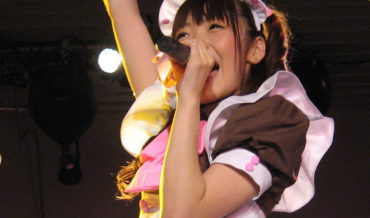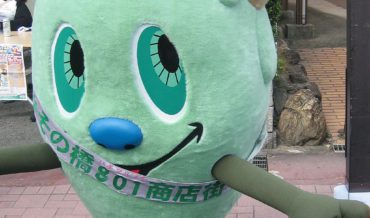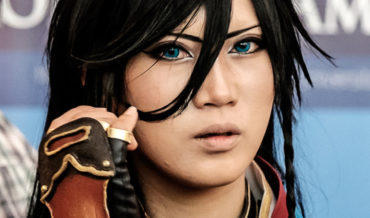Associate Professor, International Communication, Senshu University
“Are you familiar with Japanese ‘moe’ relationships, where socially dysfunctional men develop deep emotional attachments to body pillows with women painted on them?” asks James Franco, guest starring on the popular American sitcom 30 Rock.[1] Later in the episode, the actor is shown holding a pillow emblazoned with the image of a girl character. He introduces the pillow character, which is crudely drawn in the style of manga and anime, as Kimiko; the audience is laughing. The laughter comes from a growing worldwide awareness of manga and anime, including the antics of some of their more extreme fans. While talking about “moe,” Franco offers a concise description of such fans: socially dysfunctional men who are entirely too attached to fictional girls. The writers of 30 Rock likely got this idea from an article in The New York Times Magazine, which introduces the reader to a thirty-seven-year-old man—overweight and balding—in love with a body pillow that he openly interacts with as a manga/anime character named “Nemutan” (Katayama 2009). In Japan, the reader is told, such “moe relationships” are a “social phenomenon.”
Needless to say, perhaps, but setting moe up as a joke is not entirely helpful. The audience is encouraged to laugh and move on. He says that it is a Japanese thing, right? Yeah, we all know how weird they are! This does little more than reproduce an orientalizing discourse of the “other” (Said 1978), and the United States has a long history of positioning Japan as “phenomenally strange” (Benedict [1946] 2006, 10). If one starts without the presumption of knowledge, however, and takes moe seriously, then there is much to learn from Japan. Questions potentially shed light on human attraction and attachment to, and affection for, characters, which is a widely recognized and significant part of social life in the world today (Allison 2006, 31–34, 176–80; see also Pettman 2009; Turkle 2011).
Linguistically, moe is the noun form of the verb moeru, which means “to burst into bud” or “to sprout.” There is a youthful vitality to the word, reflected in its use in Japanese poetry from as early as the eighth century (Macias and Machiyama 2004, 50). Moe can also be a given name, which in manga and anime is typically reserved for young female characters (Condry 2013, 191). In the 1990s, manga/anime fans in Japan started to gather online to talk about their favorite characters. The story goes that they were trying to write the verb moeru, meaning “to burn,” but computers would often mistakenly convert this as the homonymous verb meaning “to burst into bud,” which caught on as in-group slang (Morikawa 2003, 30–32). Given these roots, moe tends to be used in relation to manga and anime, novels and games featuring manga/anime-style characters, and related forms.
In its contemporary usage, moe means an affective response to fictional characters.
In its contemporary usage, moe means an affective response to fictional characters.[2] There are three things to note about this definition. First, moe is a response, something that occurs, not a given state. Second, moe is situated within those responding and is not that to which they are responding. Third, the response is to fictional characters. This last part is crucial, because moe is a term that comes out of manga/anime fan culture and relations with manga/anime characters. While not unique to Japan, it is there that comics and cartoons truly became mass media, reaching men and women of all ages, and affection for characters became widespread and intense enough to generate shared a language to discuss it.
In Japan, a robust discussion of moe includes contributions from fans, marketers, artists, academics, cultural critics, activists, and more. Moe has been linked to manga/anime fans consuming characters across media and material forms to expand and ground relationships (Morinaga 2005; outside Japan, see Orsini 2015). Approaching it as “imaginary love” (nō’nai ren’ai), novelist and critic Honda Tōru advocates moe as a radical overturning of the “commonsense” that real and meaningful relationships must be between humans (2005a, 59, 81, 151; 2005b, 142). By embracing the alternative of moe, one refuses the demands of existing social and sexual norms and “take[s] it easy,” which can be the difference between happy acceptance and angry rejection of life (Honda and Yanashita 2008, 69, 72–73). Even as Honda and others declare that they are married to characters, groups such as the Revolutionary Moe-ism Alliance (Kakumei-teki moe shugisha dōmei) have formed.[3] Anthropologist Ian Condry points out that sharing moe contributes to the “emergence of alternative social worlds” (2013, 203). Meanwhile, critics wonder if fictional characters might be pulling men and women apart and contributing to Japan’s shrinking population (Rani 2013). Moe is thus discussed in economic, social, and political terms.
Drawing attention to how fictional characters can trigger affective responses, moe opens a window onto different ways of seeing and interacting with images. Manga/anime creators and fans alike dwell with and on characters. Put another way, they work to design and pursue characters that affect or “moe characters” (moe kyara). Manga/anime characters generally, and moe characters specifically, tend to be “cute” (kawaii). Outside of Japan, researchers suggest that cuteness encourages “social engagement” with “humanized” others (Shermann and Haidt 2011, 1, 4, 6). Getting people to “socially engage with (e.g., befriend, play with) an animated or stuffed character is facilitated by making it physically cute,” which “has been exploited by toy makers, video game designers and animators” (ibid., 5). Manga/anime characters generally, and moe characters specifically, also tend to have large, emotive eyes that suggest inner life (Takahashi 2008, 124), which further encourages social engagement and humanization. Characters at times look directly at the viewer and return the gaze, which establishes a relationship (Greenwood 2014, 243–45). It is perhaps better, then, to describe the viewer of such an image as an “interactor,” or someone interacting with it.
Manga and anime designed to affect viewers/interactors will often focus on cute characters appearing in stories of romance, comedy, and everyday life that humanize them. Viewers/interactors come to know, relate to, and care about these characters. Particularly affecting scenarios are called “moe situations” (moe shichu). In addition to character design and scenario writing, there are professional actors and actresses providing voices for characters, and they are valued for their ability to produce “moe voices” (moe goe). Watching with increased awareness, manga/anime fans become attuned to “moe elements” (moe yōso) of character design, scenario, and voice, and pursue them in other works or go on to produce their own works (Azuma 2009, 39–53, 75–79). Simply put, manga/anime fans and creators, who increasingly overlap, develop “moe literacy” (moe’e riterashī) (Kagami 2010, 131).
The culture of character affection can change the way that manga/anime fans see and interact with objects, surroundings, and others. Any representation of the character or anything that brings it to mind can trigger a moe response. When fans describe figurines as “moe,” for example, it is because such objects are representations of the characters that affect them. To return to James Franco’s “moe relationships,” it is not that fans are in love with body pillows, but rather they are in love with characters; the pillows are significant in that they allow fans to interact, bodily and imaginatively, with characters. One can start with characters and go to objects, or with objects and go to characters. Many manga/anime fans engage in the practice of “moe anthropomorphism” (moe gijinka), where anything and everything—a factory, car, animal, plant, planetary body—is turned into a character that can trigger an affective response. Humans, too, can be thus imagined in what might be called “moe characterization.” While it may appear that in these situations humans are interacting with other humans, fans instead highlight their interactions with characters. As a fan explains, moe “changes one’s way of seeing things” (Galbraith 2015, 155). In this way, manga/anime fans see and interact differently with/in the world.
The complexities of moe can be worked through in the example of a specific character, Ayanami Rei. As one of the main characters in Neon Genesis Evangelion (Shin seiki Evangerion; 1995–1996), a television anime that was popular enough to be called a “social phenomenon” (shakai genshō) (Takeda 2005, 166), Ayanami affected many manga/anime fans and left a mark on Japanese media in general. She has been voted the “most iconic character of the 1990s”[4] and praised as a “goddess” and “icon of Japanese anime.”[5] She is said to have become a character archetype, elements of which can be recognized in derivative forms throughout anime since then (Azuma 2009, 49–52). Moved to strong emotions of love and hate, a generation of fans went on to produce their own works in response to the characters and story (Galbraith 2014, 118–19). An economist who wrote a book on moe, Morinaga Takurō opines that, “Ayanami Rei is the type that Japanese fans prefer” (Morinaga 2005, 133), and it has been said euphemistically that, “There are probably a million men in Japan who are in love with Ayanami Rei.”[6] As an example of a moe character in all of its facets, Ayanami affects in terms of design, voice, story, spin offs, merchandise, fan activities, and more.
Working on a tight budget, Gainax, the production studio behind Evangelion, adopted techniques of limited animation, or animating movement selectively and creating different types of movement using camera tricks, special effects, sound, on-screen text, and more. As a result, illustrator Sadamoto Yoshiyuki needed to design characters that could attract and hold attention while remaining still. The result might be called affect images, which move viewers to a response without the characters themselves necessarily moving.[7] Given the limited animation, voiceover work was also an important aspect of Evangelion. The voice of Ayanami is Hayashibara Megumi, whose renowned capabilities made her a celebrity in the 1990s. Brought to life by Hayashibara, Ayanami’s voice alone could affect.[8]
Although it has been suggested that some fans were more interested in the characters than the story of Evangelion, which cultural critic Azuma Hiroki highlights as a historic turn toward moe (2009, 36–38), the story is in fact crucial to Ayanami’s development as a character. As things begin to unravel in this postapocalyptic world, it is revealed that Ayanami is a clone, and the one the viewer/interactor has come to know is in fact not the first one. There have been Ayanamis before, who have died in various ways; dozens of Ayanamis are prepared in test tubes and are waiting to replace Ayanami, who is distinguished by her social experiences and growth. The clones are produced using the DNA of the male protagonist’s mother, which makes Ayanami’s position as a love interest that much more complex. And the clone Ayanami houses the soul of Lilith, a primordial creature and the mother of all humans.[9]
With a story that encourages compounding interest in Ayanami, Evangelion includes various scenes involving her that powerfully affect the viewer. A good example is episode six, at which point the viewer/interactor still knows little about Ayanami other than her solitude, silence, and “special” relationship with the male protagonist’s father. If anything, she has acted coldly toward the male protagonist, whose fraught relationship with his father causes friction between them. When she and the male protagonist are tasked with fighting a giant invading creature, however, Ayanami assures him that she will protect him at all costs; even if she dies, she can be replaced. The viewer/interactor does not know that Ayanami is a clone and takes this to mean that she is a disposable pawn for the father, much like the male protagonist. Ostensibly only fourteen years old and fighting on her own until now, it is tragic to hear Ayanami flatly tell the protagonist, “goodbye,” before leaving for battle. When Ayanami does almost die, the protagonist runs to her side, sees her alive, and breaks into tears. Moved by his concern, and seeing something of his father in him, Ayanami smiles gently. In this moment, Ayanami looks directly at the screen and seemingly the viewer, who becomes an interactor in relation with her, and a combination of visuals, voice, music, story, and direct appeal trigger an affective response.
Important to the discussion of moe is that Gainax, having previously experienced a hit anime series with a popular female character but contractually unable to capitalize on it (Takeda 2005, 132), did significantly more to respond to fan affection for Ayanami.[10] On the one hand, the airing of Evangelion coincided with the completion of Gainax’s corporate website, which encouraged fan-creator interaction and contributed to the phenomenon (Clements 2013, 2, 208). On the other hand, as anime historian Jonathan Clements puts it, “Gainax’s main advantages in the competition for consumer attention were quality of artwork and the ability to subvert their own characters” (ibid., 201). Demonstrating the confluence of these factors, even before Evangelion completed its run, fans were already producing art and fiction about the characters, which Gainax encouraged by releasing official spinoffs.[11] As Azuma explains, Gainax was behind a slew of derivative works, mahjong games, and “erotic telephone card designs using the Evangelion characters” (2009, 37). Gainax even released Neon Genesis Evangelion: Ayanami Raising Project (Shin seiki Evangerion: Ayanami ikusei keikaku; 2001), a game that allows the player to nurture a virtual Ayanami.
Not only does Ayanami appear in multiple media forms but also in multiple material forms. Evangelion inspired an explosion in the anime character figurine market, which reportedly expanded tenfold and sparked a rapid growth in specialty stores (Galbraith 2014, 159–60). Figurines of Ayanami—clones of clones, as it were, designed to attract and affect—“sold like hot cakes” and “ignited a boom in merchandise unprecedented in a country already awash with such goods” (Fujie and Foster 2004, 98, 126). Beyond figurines, as commentators Fujie Kazuhisa and Martin Foster write, Ayanami “Rei’s popularity soared in Japan, with books featuring her image on the cover selling like hot cakes. She was christened by the media, ‘The girl who manipulates magazine sales at will,’ ‘The fastest route to the sold-out sign!’ and even, ‘The Premium Girl’” (ibid., 39). Even as fanzine conventions were devoted to the series, mainstream bookstores nationwide had Evangelion sections. In 2003, it was estimated that Evangelion had generated 30 billion yen in sales (Morikawa 2012, 147). In the second decade of the twenty-first century, Ayanami and other Evangelion characters are sold in thousands of different forms.[12] Although the sheer amount of media and material representations of Ayanami is staggering, and more than a few feature her in sexualized poses and fetish costumes that arguably go “too far” (ibid., 126), it is beyond doubt that these function to ground and expand fans’ affective relations with the character through physical contact and copresence in a shared world. Some Evangelion figurines even reproduce Ayanami’s voice, which increases the object’s capacity to affect. Available since the mid-2000s, life-sized dolls and figurines of Ayanami sell for between 400,000 and 700,000 yen, which for some is a small price to pay to encounter the character on a human scale.
One also sees Evangelion fans costuming as Ayanami and reproducing her poses and lines. This practice allows for fans to embody Ayanami, while others encounter her as a real person with a physical human body that exists in this world. The character is reproduced through the medium of the human body, which can trigger an affective response. While human bodies are interacting, one should not miss the presence of the character and its affect on those human bodies and interactions.
In the summer of 2014 at the Comic Market, a convention in Tokyo that draws over half a million fans of manga/anime characters, a man appeared carrying a body pillow emblazoned with the image of Ayanami Rei. When asked, he explained proudly that Ayanami was “his wife” (ore no yome). He was not the first, nor would he be the last, to make such a declaration. For example, in October 2008, a Japanese man began petitioning for legal recognition of marriage to fictional characters, which, though a joke, Condry interprets as also a gambit for social recognition of the value of affective relationships (2013, 200–203).[13] Faced with a man interacting with his Ayanami pillow in public, and interacting with others similarly accompanied by media and material representations of characters, one is hard pressed to see them as “socially dysfunctional.” These men—and, it should not be forgotten, also women—are social in different ways. If for some manga/anime fans moe is “a reason to live” (ikigai) (Galbraith 2014, 106), then this affective response to fictional characters might also point to other ways of living and loving in the world. This is the potential of moe as affect, or the “push of life” that “runs through individual bodies, collective populations and more-than-human worlds” (Anderson 2012, 28).
Notes
- The episode, titled “Klaus and Greta,” aired on January 14, 2010. ↑
- Affect here means a modification or variation produced in a body (including the mind) by an interaction with another body that increases or decreases the body’s power of activity (Spinoza 2005, 70). ↑
- A devoted player of adult computer games, Honda claims to be married to Kawana Misaki, a seventeen-year-old schoolgirl, have young sisters named Honda Yū, Suzumiya Akane, and Tōdō Kana, and have a maid named Nagisa (Kijima 2012, 165). ↑
- Newtype, March, 2010. ↑
- See the article “Shunjū,” Nikkei Net, September 1, 2007, http://web.archive.org/web/20070903120349/http://www.nikkei.co.jp/news/shasetsu/20070831AS1K3100231082007.html. ↑
- See the article “Shunjū,” Nikkei Net, September 1, 2007, http://web.archive.org/web/20070903120349/http://www.nikkei.co.jp/news/shasetsu/20070831AS1K3100231082007.html. ↑
- Media theorist Thomas Lamarre describes such characters as “soulful bodies,” where “spiritual, emotional, or psychological qualities appear inscribed on the surface” (2009, 201). ↑
- Notable examples include sequences of voiceover without an accompanying character image (for example, “Rei’s poem” in episode fourteen), where it is the voice that affects. ↑
- Fittingly for Ayanami, Lilith, the love interest for a generation of men, is said to be an “oneiric temptress, who makes men fruitlessly spill their seed and whose love, once tasted, prevents them from ever finding satisfaction with a human woman” (Ortega 2007, 227). ↑
- The character in question is Nadia from Nadia: The Secret of Blue Water (Fushigi no umi no Nadia; 1990–91), who was voted best female character in an Animage magazine reader poll in 1991 (Camp and Davis 2007, 230). Nadia was the first character to unseat Nausicaä from Nausicaä of the Valley of the Wind (Kaze no tani no Naushika; 1984), who had been voted best female character consistently until the appearance of Nadia. Unfortunately, Gainax “was denied any and all of the rights associated with the project” (Takeda 2005, 132). ↑
- Evangelion director Anno Hideaki anticipated the appearance of derivative works. For instance, a scene from another possible world is inserted into the final episode. In that world, an extremely emotional and energetic Ayanami Rei arrives as a transfer student in what appears to be the beginning of a romantic comedy. While this might seem completely out of character, or rather a reimagining of the character in the form of fan fiction and art, this world already existed in derivative works (Azuma 2009, 38). The episode, then, is an official parody, or a parody of a parody in the original. To further complicate things, some suggest that this scene is a parody of Anno’s original idea for Evangelion as a typical school romantic comedy that would “make anime lovers happy” (Gwern, “Interview with Hideaki Anno (English),” February 22, 2012, http://www.gwern.net/docs/eva/1997-animeland-may-hideakianno-interview-english). Conversely, Lamarre argues that, “Anno thought of Evangelion as a critique of otaku fandom” (2006, 378). ↑
- See the Evangelion Store at http://www.evastore.jp/pc/. ↑
- See also SAL9000, who received international attention for holding an official-looking ceremony for his marriage to a character (https://www.youtube.com/watch?v=hsikPswAYUM); and Gatebox, a product that allows one to live with a character as an intimate partner (https://www.youtube.com/watch?v=nkcKaNqfykg). ↑
References
Allison, Anne. 2006. Millennial Monsters: Japanese Toys and the Global Imagination. Berkeley: University of California Press.
Anderson, Ben. 2012. “Affect and Biopower: Towards a Politics of Life.” Transactions of the Institute of British Geographers 37, no. 1: 28–43.
Azuma, Hiroki. 2009. Otaku: Japan’s Database Animals. Minneapolis: University of Minnesota Press.
Benedict, Ruth. (1946) 2006. The Chrysanthemum and the Sword: Patterns of Japanese Culture. Boston, MA: Mariner Books.
Camp, Brian, and Julie Davis. 2007. Anime Classics Zettai!: 100 Must-See Japanese Animation Masterpieces. Berkeley, CA: Stone Bridge Press.
Clements, Jonathan. 2013. Anime: A History. New York: Palgrave.
Condry, Ian. 2013. The Soul of Anime: Collaborative Creativity and Japan’s Media Success Story. Durham, NC: Duke University Press.
Fujie, Kazuhisa, and Martin Foster. 2004. Neon Genesis Evangelion: The Unofficial Guide. Tokyo: DH Publishing.
Galbraith, Patrick W. 2014. The Moe Manifesto: An Insider’s Look at the Worlds of Manga, Anime and Gaming. Clarendon, VT: Tuttle Publishing.
Galbraith, Patrick W. 2015. “Moe Talk: Affective Communication among Female Fans of Yaoi in Japan.” In Boys Love Manga and Beyond: History, Culture, and Community in Japan, edited by Mark McLelland, Kazumi Nagaike, Katsuhiko Suganuma, and James Welker, 153–68. Jackson: University Press of Mississippi.
Greenwood, Forrest. 2014. “The Girl at the Center of the World: Gender, Genre, and Remediation in Bishōjo Media Works.” In Mechademia 9: Origins, edited by Frenchy Lunning, 237–52. Minneapolis: University of Minnesota Press.
Honda Tōru. 2005a. Moeru otoko. Tokyo: Chikuma Shobō.
Honda Tōru. 2005b. Dempa otoko. Tokyo: Sansai Books.
Honda Tōru, and Yanashita Ki’ichirō. 2008. “Tokubetsu taidan: ‘Jiken wo okoshita koto igai, hotondo boku to issho nan desu.’” In Akiba jiken wo dō yomu ka!?, edited by Yōsensha Mook Henshūbu, 68–73. Tokyo: Yōsensha.
Kagami Hiroyuki. 2010. Hijitsuzai seishōnen ron: Otaku to shihonshugi. Tokyo: Ai’ikusha.
Katayama, Lisa. 2009. “Love in 2-D.” New York Times Magazine, July 21, 2009. http://www.nytimes.com/2009/07/26/magazine/26FOB-2DLove-t.html.?_r=0.
Kijima, Yoshimasa. 2012. “Why Make E-moe-tional Attachments to Fictional Characters? The Cultural Sociology of the Post-Modern.” In Pop Culture and the Everyday in Japan: Sociological Perspectives, edited by Katsuya Minamida and Izumi Tsuji, 149–70. Melbourne, Australia: Trans Pacific Press.
Lamarre, Thomas. 2006. “Otaku Movement.” In Japan After Japan: Social and Cultural Life from the Recessionary 1990s to the Present, edited by Tomiko Yoda and Harry Harootunian, 358–94. Durham, NC: Duke University Press.
Lamarre, Thomas. 2009. The Anime Machine: A Media Theory of Animation. Minneapolis: University of Minnesota Press.
Macias, Patrick, and Tomohiro Machiyama. 2004. Cruising the Anime City: An Otaku Guide to Neo Tokyo. Berkeley, CA: Stone Bridge Press.
Morikawa Ka’ichirō. 2003. Shuto no tanjō: Moeru toshi Akihabara. Tokyo: Gentōsha.
Morikawa Ka’ichirō. 2012. “Otaku and the City: The Rebirth of Akihabara.” In Fandom Unbound: Otaku Culture in a Connected World, edited by Mizuko Ito, Daisuke Okabe, and Izumi Tsuji, 133–57. New Haven, CT: Yale University Press.
Morinaga Takurō. 2005. Moe keizaigaku. Tokyo: Kōdansha.
Orsini, Lauren. 2015. “Why Adults Fall in Love with (and Spend Big Money on) Cartoon Characters.” Forbes, June 12, 2015. http://www.forbes.com/sites/laurenorsini/2015/06/12/why-adults-fall-in-love-and-spend-big-money-on-cartoon-characters/.
Ortega, Mariana. 2007. “My Father, He Killed Me; My Mother, She Ate Me: Self, Desire, Engendering, and the Mother in Neon Genesis Evangelion.” In Mechademia 2: Networks of Desire, edited by Frenchy Lunning, 216–32. Minneapolis: University of Minnesota Press.
Pettman, Dominic. 2009. “Love in the Time of Tamagotchi.” Theory, Culture & Society 26, no. 2–3: 189–208.
Rani, Anita. 2013. “The Japanese Men Who Prefer Virtual Girlfriends to Sex.” BBC News Magazine, October 23, 2013. http://www.bbc.com/news/magazine-24614830.
Said, Edward. 1978. Orientalism. New York: Pantheon Books.
Shermann, Gary D., and Jonathan Haidt. 2011. “Cuteness and Disgust: The Humanizing and Dehumanizing Effects of Emotion.” Emotion Review 3, no. 3: 1–7.
Spinoza, Benedict de. 2005. Ethics. London: Penguin Books.
Takahashi, Mizuki. 2008. “Opening the Closed World of Shōjo Manga.” In Japanese Visual Culture: Explorations in the World of Manga and Anime, edited by Mark W. MacWilliams, 114–36. Armonk, NY: M. E. Sharpe.
Takeda, Yasuhiro. 2005. The Notenki Memoirs: Studio Gainax and the Men Who Created Evangelion. Houston, TX: A. D. Vision, Inc.
Turkle, Sherry. 2011. Alone Together: Why We Expect More from Technology and Less from Each Other. New York: Basic Books.





